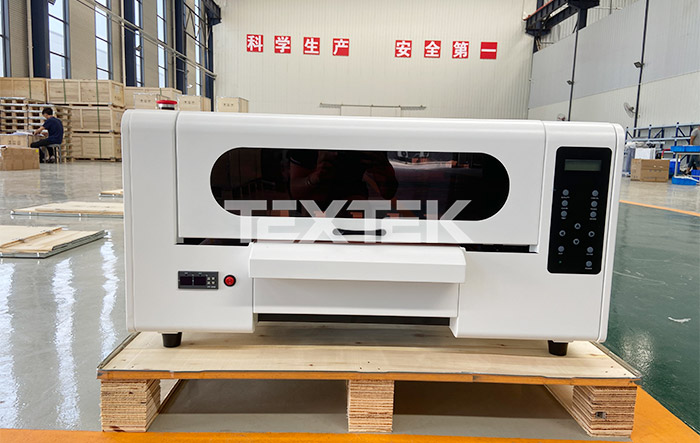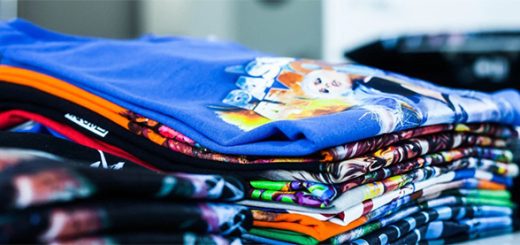DTF vs Vinyl Heat Transfer
Which is better DTF or HTV?
Many people are curious as to what makes Direct-to-Film (DTF) printing, the most recent development in t-shirt printing technology, so unique. What features can the DTF offer that other printing technologies can’t? How does the DTF compare to vinyl heat transfer technology given that it uses an adhesive to fabric technique?
Why You Should Choose DTF Over Vinyl Heat Transfer?
- First, careful weeding is necessary for vinyl heat transfer. It could take hours to remove all the extraneous elements from a complicated piece of artwork. It might not be able to remove minute details if the artwork includes numerous small inscriptions. Additionally, it is typical to discover after the weeding process that some facts are missing. The project must therefore be finished by reprinting or recutting some parts. DTF printing, does not need for weeding. Instead, DTF printing technique prints directly onto a coated PET film that also serves as the transfer paper. The difference in the method leads to faster, higher, and more efficient manufacturing.
- There won’t be an additional layer of vinyl on the t-shirt because DTF doesn’t include printing on vinyl. In contrast to vinyl, which gradually peels off, the finished product will be more durable as a result.
- When using vinyl heat transfer technology, the artwork must be held in place with a transfer paper or application tape to prevent it from breaking apart before the artwork is transferred to the fabric. Additionally, you will need to carefully peel and transfer the entire piece of artwork onto the transfer paper, which will take more time and money. DTF just needs that you print straight onto the PET film, which also serves as your transfer paper. It is already on the PET film, so the transfer procedure is no longer necessary.
- By adjusting the variables – color ink, white ink, and adhesive powder that is applied to the film – DTF printing technique also allows the user to alter the feel and texture of the print. As a result, you can modify the print texture according to the needs of the product.
- Production speed is also an important factor in the t-shirt printing industry. Faster production rates allow for higher production volume. The vinyl heat transfer printer prints at a speed of 1.75m2/hr while the latter prints at 4m2/hr.
- The DTF printing and powder curing process is a streamline process whereas the cutting process for the vinyl heat transfer printer can only be done after the printing is completed. Besides printing and cutting, a large amount of production time is also allocated towards the process of weeding and transferring.
Direct-To-Film (DTF) Printing

A specific water-based DTF pigmented ink is used in the ground-breaking technology of direct-to-film (DTF) transfer printing to print on PET film. Before a second coating of white ink is printed, a layer of colored ink will first be applied to the artwork. Additionally, the artwork must be printed in a mirror image so that the application will face the correct way when it is placed under the heat press. The printed image will next pass through a powdering and curing equipment automatically.
The only thing left to do after printing and curing is a general trim of the artwork. Remove the film after applying a heat press at a temperature of about 170 °C for about 15 seconds to the fabric to transfer the artwork. In the end, only the desired artwork will remain on the fabric. The same fabric product that the heat transfer vinyl can be applied to also accepts DTF.
DTF printing technology process generally involves the following: Design > print on film > apply adhesive powder > cure > trim > heat press > remove film > finish.
Vinyl Heat Transfer Printing
One of the most popular processes for personalizing fabric products is vinyl heat transfer. The procedure requires utilizing an eco-solvent printer to print on white heat transfer vinyl, which is then cut with a vinyl cutting plotter along the artwork’s contours. Weeding is necessary to remove any extra vinyl after printing and cutting so that only the desired artwork remains. The artwork is then secured with application tape while the heat transfer vinyl’s under-liner is removed to reveal only the adhesive vinyl layer. Vinyl will be applied to the fabric using a heat press machine. Similar to applying stickers or decals, this procedure uses heat to adhere fabric to typical fabric goods including t-shirts, sportswear, sweatshirts, hoodies, bags, and backpacks.
Heat transfer vinyl is also available that cannot be printed on. Such vinyl is available in a wide range of hues, designs, and qualities, including solid hues, glossy, reflecting, and even glittering materials. These non-printable vinyl just need to be cut and weeded using a vinyl cutting plotter, then applied using the same technique as before. The personalization of names and numbers onto jerseys for sports like football and basketball is the most popular use for non-printable vinyl.
Vinyl heat transfer process follows the workflow: Design > print on heat transfer vinyl > contour cut > weed > apply application tape > heat press > remove application tape > finish.
TEXTEK is a professional manufacturer of dtf printers and dtf supplies. Custom designs can be printed on t-shirts, hats, socks, and many other items with a DTF printer. You can allow your consumers to have their preferred piece of clothing printed with bespoke designs thanks to the growing industry of DTF printing.







